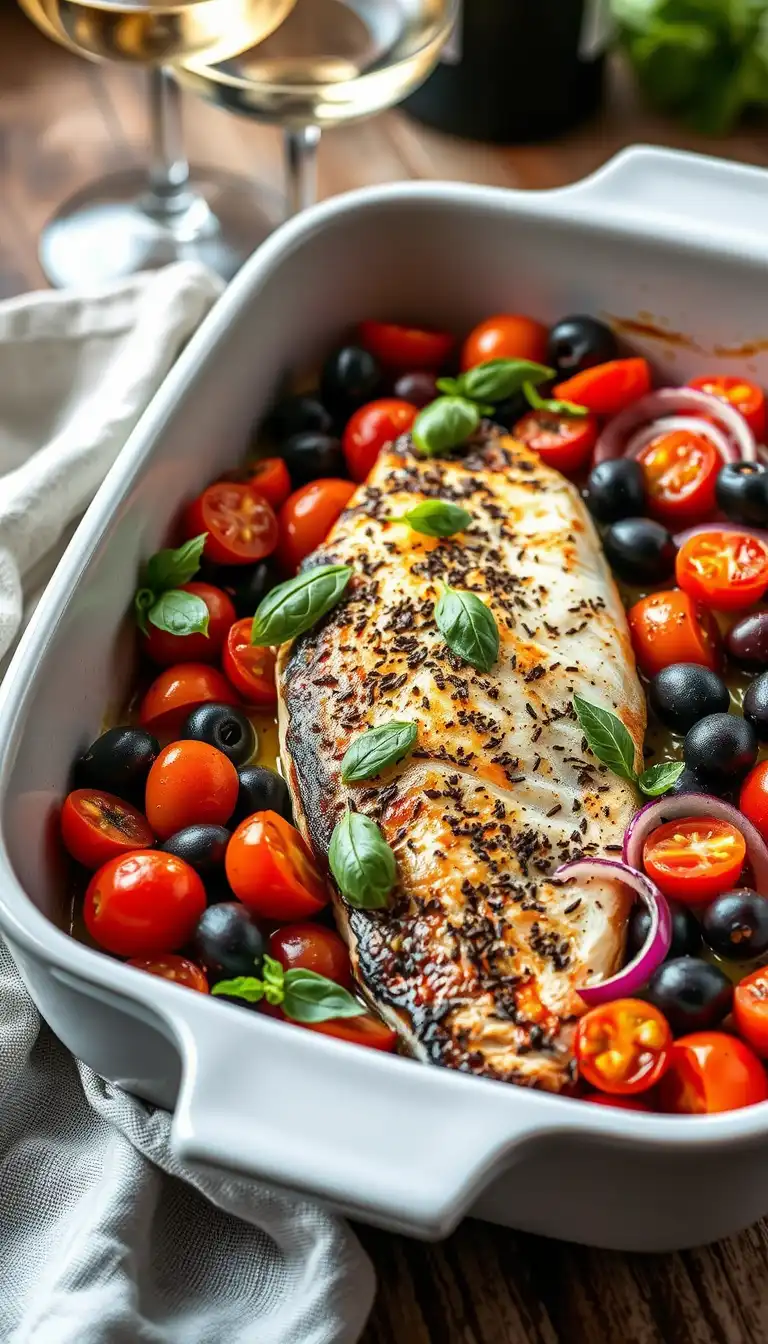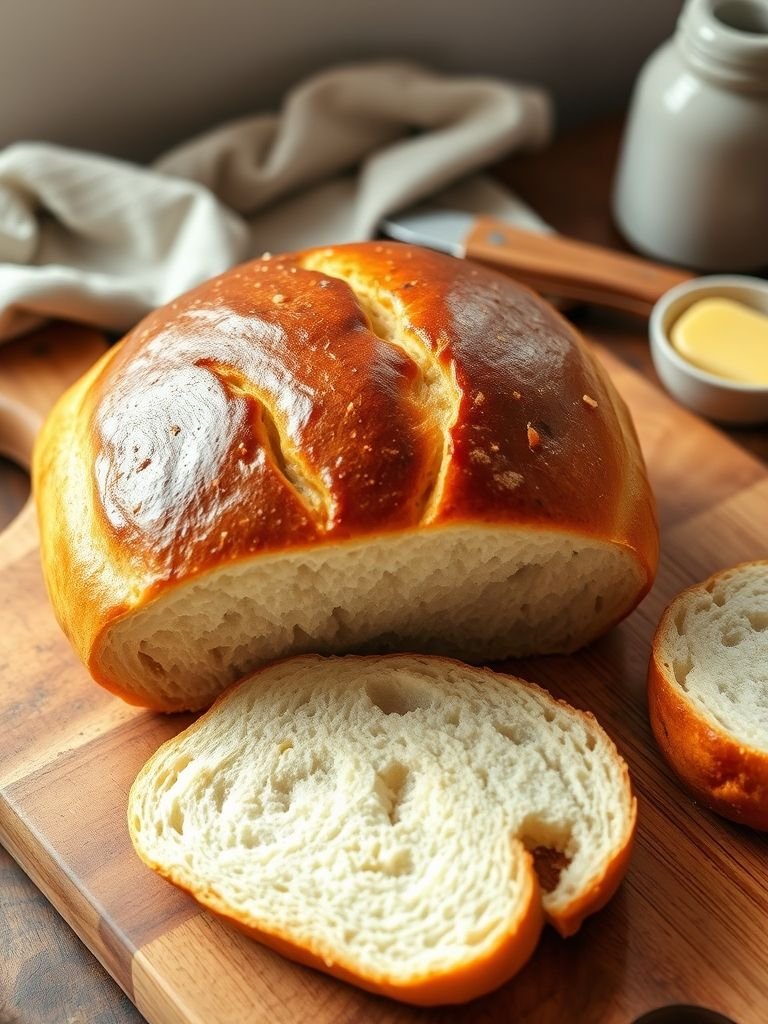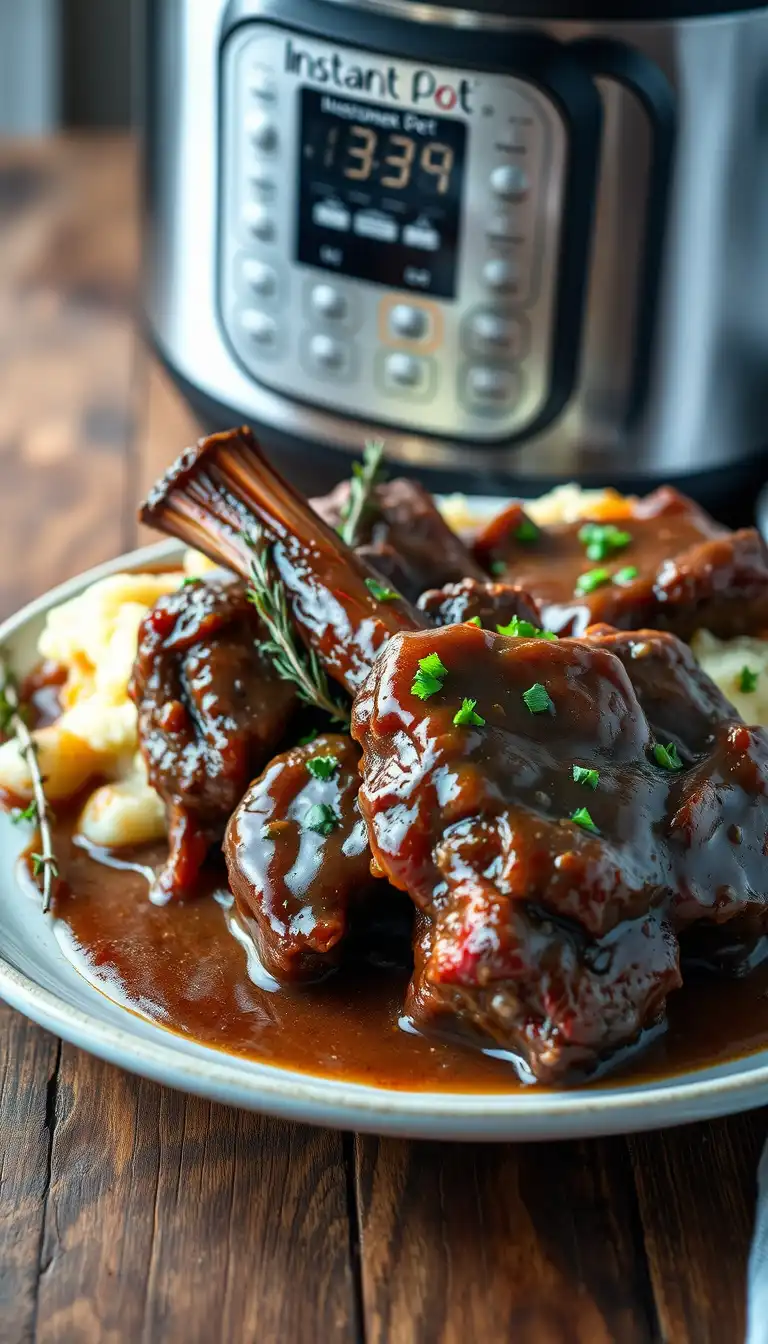Pizza Sauce Recipe: The Ultimate Guide for Homemade Pizza Lovers
Few things compare to the joy of biting into a homemade pizza with fresh, gooey cheese, a crispy crust, and a sauce that’s bursting with flavor. While the crust and toppings are important, the pizza sauce often makes or breaks the entire dish. Making your own pizza sauce is not only simple but also allows you to customize it to your taste—sweet, tangy, or spicy. In this guide, we’ll show you the best pizza sauce recipe, tips for perfect flavor, and ways to use it beyond pizza.
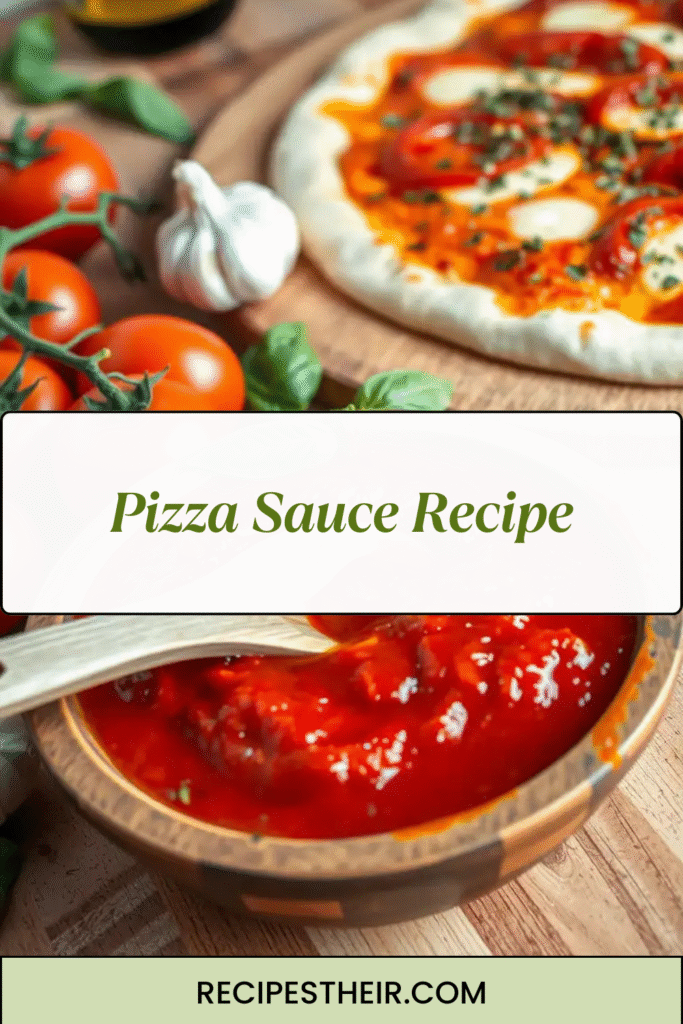
Why Make Your Own Pizza Sauce?
Store-bought pizza sauces are convenient, but they often come with added sugars, preservatives, and flavors that might not appeal to everyone. Making your own sauce allows you to:
- Control the ingredients for a healthier option
- Customize the flavor to your liking
- Make it fresher and more vibrant than store-bought versions
- Experiment with different herbs and spices
A homemade pizza sauce recipe can be as simple as a few ingredients or as rich as a slow-simmered tomato sauce—perfect for all types of pizza, from Margherita to pepperoni.
Ingredients for the Best Pizza Sauce Recipe
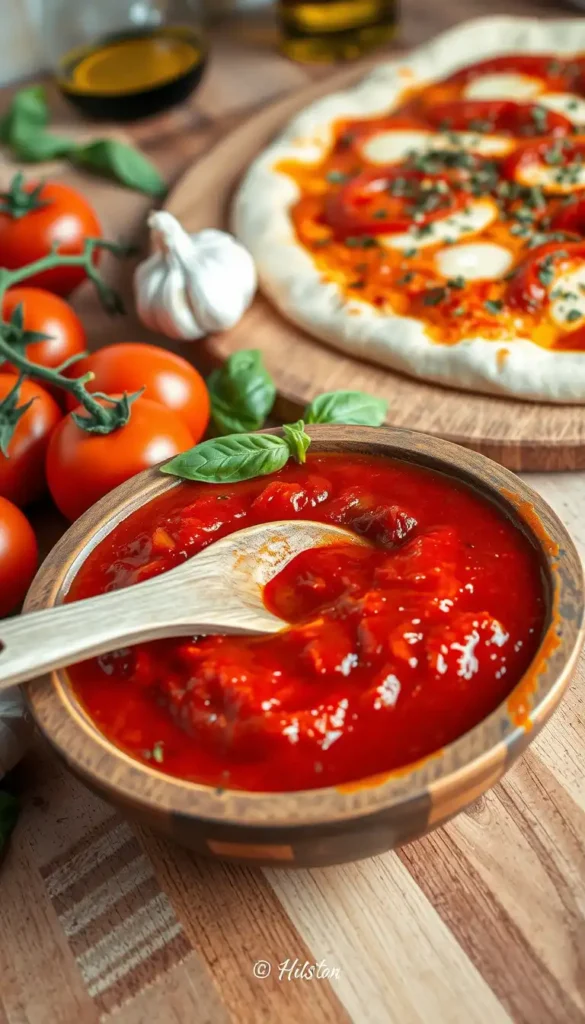
Here’s a classic ingredient list for a quick and easy pizza sauce recipe:
- 1 can (28 oz) whole peeled tomatoes – Fresh or canned tomatoes work, but canned are consistent in flavor.
- 2 tablespoons olive oil – Adds richness and depth.
- 3 cloves garlic, minced – Essential for flavor.
- 1 teaspoon sugar – Balances acidity.
- 1 teaspoon salt – Enhances overall taste.
- 1 teaspoon dried oregano – Classic Italian herb for authentic flavor.
- 1 teaspoon dried basil – Adds sweetness and aroma.
- ½ teaspoon black pepper – Adds mild heat.
- Optional: Red pepper flakes for a spicy kick, onion powder, or fresh herbs.
Step-by-Step Pizza Sauce Recipe

1. Prep the Tomatoes
Start by draining the canned tomatoes, reserving a little juice for a thinner sauce if needed. Crush the tomatoes by hand or pulse in a blender until smooth. For a chunkier sauce, leave some pieces intact.
2. Cook the Garlic
Heat the olive oil in a saucepan over medium heat. Add the minced garlic and sauté for 30–60 seconds until fragrant. Avoid browning the garlic, as it can turn bitter.
3. Add Tomatoes and Seasonings
Add the crushed tomatoes to the pan, along with sugar, salt, oregano, basil, and black pepper. Stir to combine.
4. Simmer the Sauce
Reduce heat to low and let the sauce simmer for 15–20 minutes, stirring occasionally. This allows the flavors to meld and the sauce to thicken slightly. If you prefer a thinner sauce, add a little reserved tomato juice or water.
5. Taste and Adjust
Taste the sauce and adjust seasonings as needed. If the sauce is too acidic, add a pinch more sugar. For more flavor depth, you can add a teaspoon of tomato paste or a splash of balsamic vinegar.
6. Cool and Store
Let the sauce cool before spreading it on your pizza dough. Store leftovers in an airtight container in the refrigerator for up to a week or freeze for up to three months.
Tips for the Perfect Pizza Sauce
- Use quality tomatoes: The better the tomato, the better the sauce. San Marzano or other Italian varieties are ideal.
- Don’t overcook: Simmering too long can make the sauce overly thick and concentrated.
- Fresh herbs: Adding fresh basil or oregano at the end of cooking brightens the flavor.
- Consistency matters: For a smooth pizza sauce, use a blender. For a rustic feel, leave it chunky.
- Experiment with spices: Garlic powder, onion powder, or even smoked paprika can add unique flavors.
Variations of Pizza Sauce
Classic Tomato Pizza Sauce
The traditional recipe above is perfect for most pizzas. Sweet, tangy, and herb-infused, it pairs with any topping.
Spicy Pizza Sauce
Add red pepper flakes or a pinch of cayenne pepper to give your pizza a little heat. This is especially good for pepperoni or sausage pizzas.
Garlic-Butter Pizza Sauce
Melt butter with minced garlic and mix with crushed tomatoes for a rich, creamy sauce. Excellent for white pizzas.
Pesto Pizza Sauce
Swap tomatoes entirely for a basil pesto sauce for a fresh twist. This works beautifully with chicken or vegetable toppings.
Using Pizza Sauce Beyond Pizza
A homemade pizza sauce recipe is versatile! You can use it for:
- Pasta dishes: Toss with spaghetti or penne for a quick dinner.
- Dipping sauce: Serve with breadsticks or mozzarella sticks.
- Lasagna: Use as a base layer for extra flavor.
- Stuffed peppers or sandwiches: Adds a zesty Italian touch.
Common Mistakes to Avoid
- Skipping the simmer: Raw tomatoes without cooking taste acidic.
- Overloading on salt or sugar: Balance is key. Taste frequently.
- Using low-quality olive oil: It makes a noticeable difference in flavor.
- Adding too many spices: Keep it simple; classic herbs are enough.
How to Freeze Pizza Sauce
Freezing your pizza sauce is easy and convenient:
- Let the sauce cool completely.
- Portion it into freezer-safe containers or ice cube trays.
- Label with the date and store for up to 3 months.
- Thaw in the fridge overnight before use.
This is perfect for busy nights when you want homemade pizza without the prep work.
Homemade Pizza Night: Tips for Serving
Pair your homemade pizza sauce with:
- Fresh dough: Whether store-bought or homemade, fresh dough makes a difference.
- Cheese: Mozzarella, parmesan, or a blend for rich flavor.
- Toppings: From classic pepperoni to fresh vegetables or gourmet options.
- Oven temperature: Preheat your oven to 475°F (245°C) for a crispy crust.
Spread a thin layer of sauce for traditional flavor or a generous amount if you love saucy pizza.
FAQ About Pizza Sauce Recipe
Q: Can I use fresh tomatoes instead of canned?
A: Yes! Blanch and peel fresh tomatoes, then crush them for a fresh sauce. It may be slightly less sweet than canned.
Q: How long does homemade pizza sauce last?
A: In the fridge, it lasts up to a week. In the freezer, up to 3 months.
Q: Do I need to cook pizza sauce before using it?
A: Not always. Some recipes use raw sauce for a fresh flavor, but cooking enhances depth and reduces acidity.
Q: Can I make pizza sauce without sugar?
A: Absolutely. Sugar balances acidity, but it can be omitted if desired. Consider using sweet tomatoes instead.
Final Thoughts
Making your own pizza sauce is easier than you think and adds a touch of homemade authenticity to your pizza. With just a few ingredients, you can create a rich, flavorful sauce that rivals any pizzeria. Experiment with herbs, spices, and sweetness to find your perfect blend.
Whether you’re cooking a classic Margherita, a meat lover’s pizza, or a veggie-loaded pie, this pizza sauce recipe is your go-to foundation. Make a batch, store it, and elevate your pizza nights for months to come.
Quick Recipe Summary
Ingredients: Tomatoes, olive oil, garlic, sugar, salt, oregano, basil, black pepper.
Cook Time: 20 minutes
Servings: Enough for 2–3 medium pizzas
Storage: Fridge 1 week / Freezer 3 months
